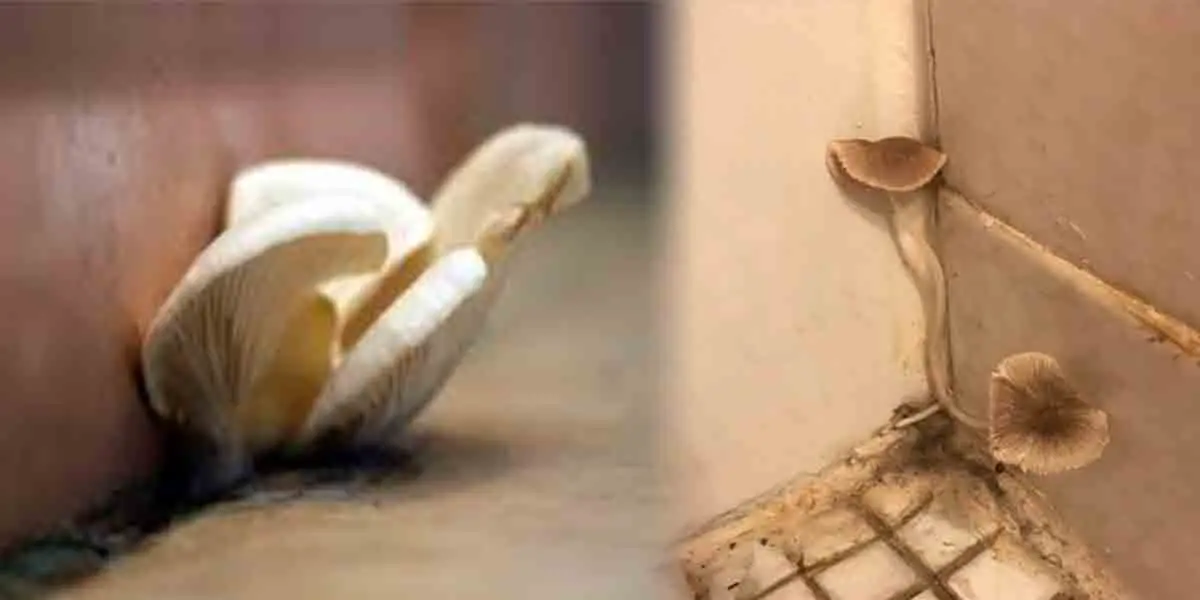White Mushroom Growth Conditions

White mushrooms thrive in specific environmental conditions to produce optimal yields. Understanding these conditions is crucial for successful cultivation.
White mushroom in bathroom – Temperature and Humidity: White mushrooms prefer temperatures between 55-65°F (13-18°C) and high humidity levels of 80-90%. Fluctuations in temperature or humidity can impact mushroom growth and quality.
The white mushroom sprouting in the bathroom’s dim corner, a testament to the humidity, brought to mind the sleek curves of the Delta Linden bathroom faucet. Its polished chrome finish would contrast beautifully with the mushroom’s earthy hue, a reminder that even in the most unexpected places, beauty can be found.
Substrates
White mushrooms require organic matter as a growth substrate. Suitable substrates include:
- Composted manure: A mixture of horse, cow, or poultry manure that has undergone a controlled decomposition process.
- Straw: Straw from wheat, rye, or barley provides a fibrous base for mushroom growth.
- Wood chips: Hardwood chips, such as oak or beech, offer a nutrient-rich substrate.
- Spent mushroom substrate (SMS): Used substrate from previous mushroom crops can be recycled as a nutrient source.
Lighting
White mushrooms do not require light for growth. However, low levels of diffused light can promote pinning, the formation of mushroom primordia.
White Mushroom Identification and Characteristics: White Mushroom In Bathroom

White mushrooms, scientifically known as Agaricus bisporus, are edible fungi prized for their culinary versatility and nutritional value. They are characterized by their distinctive physical appearance, making them easy to identify among other mushroom species.
Physical Appearance
- Size: White mushrooms typically range in size from 5 to 15 centimeters (2 to 6 inches) in diameter.
- Shape: They have a classic umbrella-shaped cap with a smooth, white surface and a slightly curved margin.
- Color: The cap of a white mushroom is pure white or slightly off-white, giving it its characteristic name.
Distinguishing Features
- Gills: Unlike some other mushroom species, white mushrooms have pinkish-brown gills underneath their caps, which darken to a chocolate brown as the mushroom matures.
- Stem: The stem of a white mushroom is white, smooth, and cylindrical, with a ring-like structure (annulus) around the middle.
- Odor and Taste: White mushrooms have a mild, earthy odor and a slightly sweet, nutty flavor.
Nutritional Value and Culinary Uses
White mushrooms are a good source of dietary fiber, protein, vitamins, and minerals. They are low in calories and fat, making them a healthy addition to various dishes. In cooking, white mushrooms are commonly used in soups, stews, salads, and sautéed preparations. Their versatility and mild flavor make them a popular choice for chefs and home cooks alike.
White Mushroom Cultivation in Unusual Environments

Cultivating white mushrooms in unconventional settings like bathrooms presents unique challenges and potential benefits. This section explores the feasibility of bathroom mushroom cultivation, providing a step-by-step guide and discussing alternative substrates and lighting systems for this purpose.
Challenges and Benefits
Growing mushrooms in bathrooms faces challenges such as limited space, fluctuating humidity, and potential contamination. However, it offers benefits like year-round cultivation, space optimization, and reduced environmental impact.
Step-by-Step Guide, White mushroom in bathroom
To cultivate white mushrooms in a bathroom, follow these steps:
- Prepare a substrate: Use a mixture of pasteurized straw, sawdust, or coffee grounds.
- Inoculate the substrate: Spread mushroom spawn evenly over the substrate.
- Incubate: Maintain a humid and dark environment for mycelium growth.
- Fruiting: Provide indirect light and increase ventilation for mushroom formation.
- Harvest: Pick mushrooms when the caps are fully open but before the spores drop.
Alternative Substrates
Besides straw, sawdust, and coffee grounds, alternative substrates for bathroom mushroom cultivation include:
- Cardboard
- Newspaper
- Compost
Lighting Systems
In the absence of natural sunlight, artificial lighting is crucial for bathroom mushroom cultivation. Consider using:
- LED grow lights
- Fluorescent lights
- Indirect sunlight from a window
The pristine white of mushrooms sprouting in the damp corners of the bathroom reminded me of the Maine white bathroom furniture I’d always dreamed of. Its sleek lines and polished surfaces would complement the earthy charm of the mushrooms, creating a sanctuary of tranquility where the boundaries between nature and design blurred.